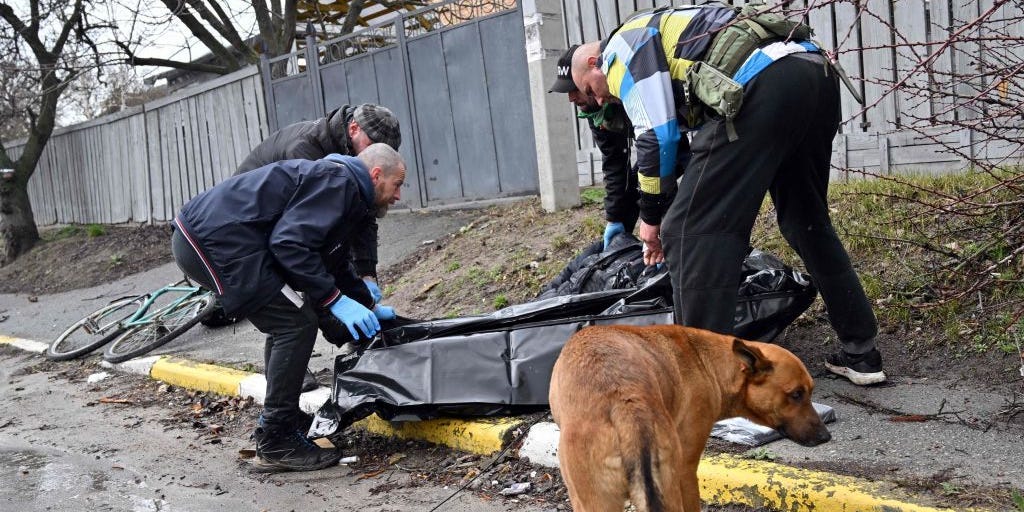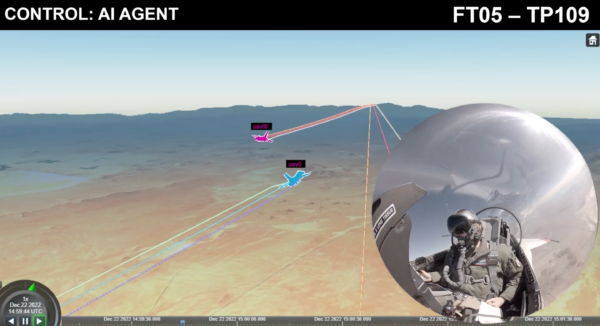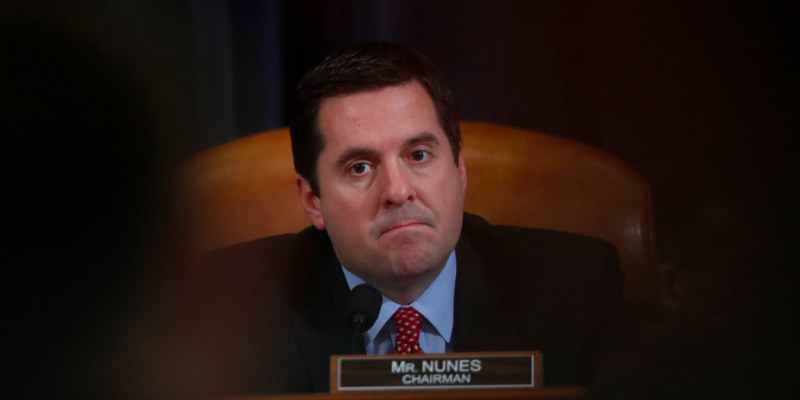- Images of a massacre of civilians in Bucha, Ukraine, have shocked the world.
- Russia claims the killings are a hoax or conspiracy meant to frame its military.
- But Russia's claims fall apart under close scrutiny, experts told Insider.
Images of dead bodies littering the streets in Bucha, Ukraine, have appalled the world.
Multiple witnesses say they were the victims of Russian soldiers who beat, tortured, and executed scores of civilians when they took of control of the town in early March.
But Russia has denied the accusations, with Russian Foreign Minister Sergei Lavrov describing them as "fake."
Joe Ondrak, lead investigator at Logically AI, told Insider that Russia was operating a "two pronged" disinformation strategy, seeking to portray the Bucha killings as a hoax, while also blaming Ukraine for the deaths there.
"On pro-Russian Telegram channels discussions abound about how the mainstream media will not report on the atrocities committed by the neo-Nazis and the Ukrainian forces against civilians in Bucha," he said.
The reality is that Western media has extensively reported the atrocities, but attributed responsibility to Russia, based on evidence from the scenes.
At the heart of the defense made by the Russian foreign ministry in a Telegram post is the claim that its forces withdrew from the town on March 30. It argues that this date means they cannot have killed the civilians.
They said that no evidence came to light before April 4, when media organisations entered Bucha. They said the bodies were not in a state of decomposition consistent with their being killed during the Russian occupation.
Mounting evidence is emerging to undermine Russia's argument, said Givi Gigitashvili, who analyses Russian disinformation for the Atlantic Council.
He told Insider that Russia's propaganda about Bucha fits to a clear pattern that it has used before.
"When Kremlin does not like facts, it tries to twist them," he said, noting that the claims tend to appeal to a Western conspiracist audience.

March 30 - April 1
Gigitashvili said that Russia's claim it withdrew its forces on March 30 is contradicted by a report in Zvezda TV, a news outlet run by the Russian ministry of defense.
Zvezda reported that its forces were conducting "clean up" operations in Bucha on April 1. A day earlier Ukrainian authorities had said that the town was still under Russian control.
Imagery of atrocities began to emerge as soon as early as April 1, Gigitashvilis said, when Ukrainian forces first entered the town.
Shocking videos soon spread showing civilian bodies lying on the street emerged on Ukrainian Telegram channels. The New York Times reported that the footage was taken by a Bucha council member.
This undermines the Russian claim that no evidence of atrocities emerged before April 3, and shows the bodies were already present when Ukrainian forces entered the town.
Russia has tried to undermine the video, with Russia's Canadian embassy tweeting that the bodies filmed in the footage can be seen to move, suggesting the people were still alive.
On closer analysis, the movement can be seen to be a mark on a windshield, as noted by open-source analysts at Bellingcat and BBC Monitoring.
—Bellingcat (@bellingcat) April 4, 2022
April 2
Russia has tried to portray the fact that images began to emerge from Bucha only after Ukrainian forces retook the town as suspicious, claiming it was only "on the fourth day" (after Russian forces left) that the pictures appeared.
But when Ukrainian forces took back full control of the town on April 2, they first had to conduct extensive operations to de-mine the area and make it safe, said Gigitashvili.
This meant that it was only on April 3 that most journalists and officials were able to enter the town and record evidence. But not all.
The first images of the bodies lying in the streets were taken by journalists from Agence France-Presse on Saturday, April 2, while the security operation was underway.
—AFP News Agency (@AFP) April 2, 2022
Satellite images
Satellite footage from Maxar Technologies published by The New York Times provides further evidence undermining Russia's argument, with the footage showing bodies lying in the street from March 11.
At that point Russia by its own account was in control of the town. The position of the bodies in the images correlates to positions of bodies in subsequent photographs and film footage.
The condition of the bodies
Russia has claimed that images of the bodies show that rigor mortis, or a stiffening of the muscles after death, has not set in, meaning they could not have been killed while its forces were in the town.
A pathologist who has investigated war crimes told BBC News that rigor mortis often lessens after 4 days, meaning that the state of the bodies is consistent with them having been killed during the Russian occupation.











